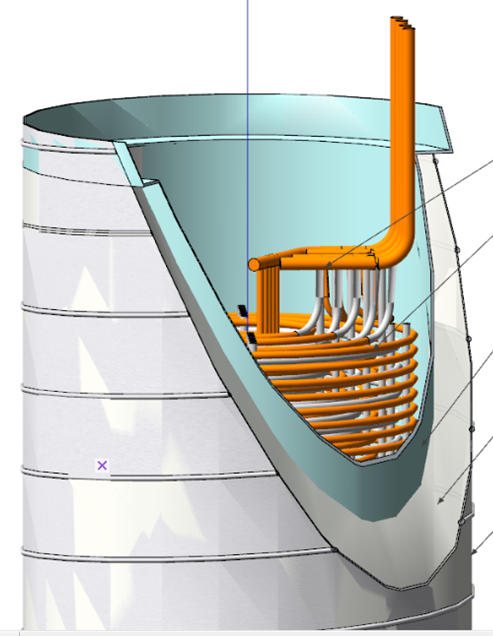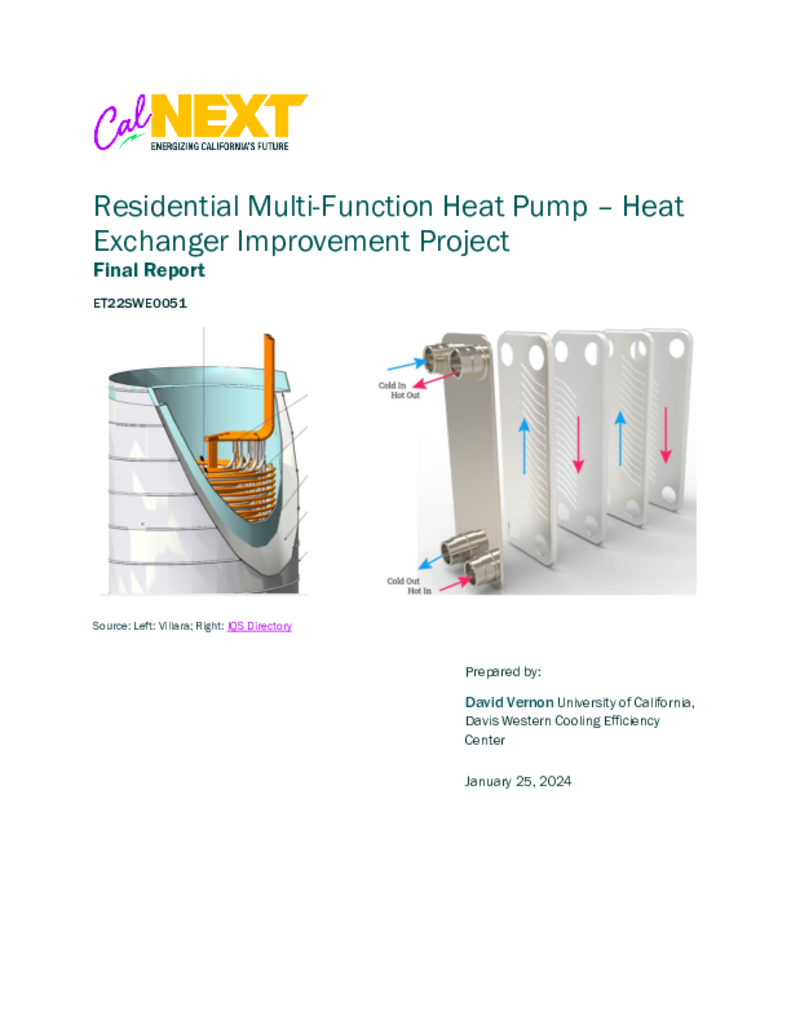ET22SWE0051 - Residential Multi-Function Heat Pumps: Heat Exchanger Improvement

Heat pump space conditioning and water heating can greatly reduce energy consumption compared to existing electric resistance or natural gas combustion options. Requirements for electrical service upgrades add cost and installation delays for customers considering heat pumps for space conditioning and or hot water heating. Around half of all homes are expected to require electrical service panel upgrades that cause delays in system installation.
Residential Multi-Function Heat Pumps use one efficient compressor and outdoor heat exchanger coil to provide space cooling, space heating, and domestic hot water heating. These systems offer many energy efficiency benefits. Air-to-air versions of these systems use refrigerant to provide the heating and cooling services and have the potential to eliminate the need for electric resistance backup heaters reducing the maximum power requirements for full size capacity systems so that they can fit on existing air conditioning electrical circuits and eliminate the need for electrical service upgrades reducing cost and speeding up installation. This technology does not need to be undersized to fit on the existing air conditioning electrical circuit.
The air-to-air multi-function heat pump that is closest to being a commercial product is a production-ready prototype with planned sales starting Q4 2022. This near-commercial design uses a hot water tank with both a refrigerant to water and a water-to-water heat exchanger. The UC Davis Western Cooling Efficiency Center (WCEC) has a PG&E-funded emerging technologies project in progress field testing this prototype system. Preliminary results show good energy efficiency performance for typical heat pump mode cooling rejecting heat to outdoors and heating moving thermal energy from outdoors to indoors. Preliminary results show even higher efficiency for the mode using waste heat from space cooling to heat hot water. Preliminary findings also show that the heat exchanger design can likely be improved to further increase energy efficiency and to reduce costs. There are also options for using lower GHG impact refrigerants.
This project will collect specifications and cost data for relevant commercially available heat exchangers, build computer models of the refrigerant to water and water-to-water heat exchangers using different refrigerants to assess the current design, and complete a technoeconomic analysis to recommend improvements that can increase efficiency, reduce cost, and reduce refrigerant GHG impacts. This model, analysis, and recommendations will build on previous research that can inform but does not answer the questions for this application such as indirectly heated hot water storage tanks.
This project will directly prepare for a lab demonstration project to test system performance with improved heat exchanger design as well as field demonstration and performance verification in DAC and HTR customer buildings.
Residential Multi-Function Heat Pumps (MFHP) are a new product category that uses one outdoor unit with an efficient compressor and heat exchanger coil to provide space cooling, space heating, and domestic hot water heating. MFHPs have lower peak power consumption with the potential to avoid the need for electrical service breaker panel upgrades in many residential buildings, reducing cost and speeding up installation times compared to the typical separate space conditioning heat pump and standalone heat pump water heater products. In all MFHP systems, thermal energy must be exchanged from refrigerant-to-water and then from water-to-water to heat domestic hot water. The design of the heat exchangers has a significant impact on energy efficiency, cost, and the amount of refrigerant required in the system. This study collected specifications and cost data for commercially available heat exchangers, built computer models of the refrigerant-to-water and water-to-water heat exchangers, and completed a techno-economic analysis to recommend designs that can increase efficiency, reduce cost, and reduce refrigerant greenhouse gas (GHG) impacts. The results suggest that MFHP hot water heat exchanger designs using a refrigerant-to-water brazed plate heat exchanger combined with a pressurized tank containing an immersed water-to-water heat exchanger coil have the potential to save energy and reduce cost compared to ambient pressure tank with double-immersed coil designs.

